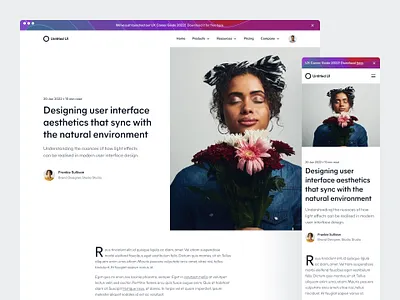We are drowning in a sea of information yet starving for wisdom. Every day, algorithms serve us a banquet of content—articles, videos, podcasts, posts—each competing for a sliver of our attention. Yet how often do we finish consuming something feeling enriched rather than exhausted? The paradox of our digital age is this: never before have we had such access to human knowledge and creativity, yet rarely has that access felt so shallow. The problem isn’t the volume of content; it’s the erosion of curation. True curation—the intentional selection, contextualization, and presentation of ideas—has been replaced by algorithmic optimization and viral sensationalism. The result is a cultural landscape where depth is sacrificed for reach, meaning for metrics, and connection for clicks. Reclaiming the art of curation isn’t a nostalgic luxury; it’s an urgent act of cultural preservation.
The Algorithmic Delusion: When Optimization Replaces Judgment
Once, curators were trusted guides—librarians who knew every corner of their collections, editors who shaped public discourse through thoughtful selection, teachers who distilled complex ideas into accessible wisdom. Their authority came from expertise, taste, and a deep understanding of context. Today, algorithms have assumed this role, not through wisdom but through computation. Platforms like Facebook, YouTube, and TikTok don’t curate; they optimize. Their goal isn’t to present what matters but to maximize engagement, however fleeting.
This optimization creates what information scientist Cass Sunstein calls “echo chambers” and “filter bubbles.” Algorithms feed us more of what we already like, creating feedback loops that reinforce preferences and isolate us from challenging perspectives. A 2023 Stanford study found that 68% of YouTube users are funneled toward increasingly extreme content because the algorithm prioritizes watch time over ideological diversity. The result isn’t discovery; it’s entrapment. We mistake the illusion of personalization for genuine curation.
Worse, algorithmic “curation” lacks moral judgment. It can’t distinguish between valuable journalism and misinformation, between art and exploitation, between nuanced debate and inflammatory rhetoric. When Facebook’s algorithm promoted anti-vaccine content during a pandemic or TikTok amplified dangerous self-harm challenges, it wasn’t malice—it was the logical outcome of a system designed to amplify engagement above all else. True curation requires ethical discernment. Algorithms have none.
The Attention Economy: How Content Became Disposable
Curation isn’t just about selection; it’s about presentation. A well-curated experience creates context, connection, and continuity. Think of a museum exhibition where artifacts are arranged to tell a story, or a bookstore where staff picks guide you to unexpected treasures. These environments invite slow, engaged attention. Digital platforms, by contrast, are designed for disposability.
The infinite scroll, autoplay videos, and ephemeral stories of social media create what psychologist Maryanne Wolf calls “skim reading.” We flit from piece to piece, absorbing fragments without depth. A 2022 MIT study revealed that the average user spends just 15 seconds on an article before moving on. This isn’t consumption; it’s sampling. And when everything is sampled, nothing is savored.
This disposability devalues content creators too. Artists, writers, and journalists are pressured to produce more, faster, chasing metrics rather than meaning. The phrase “content is king” has been twisted to mean “quantity over quality.” A musician might release a dozen singles a year instead of crafting an album. A writer might publish listicles instead of investigative reports. The result is a cultural landscape littered with digital fast food—filling but unsatisfying.
The Fragmentation of Shared Culture
One of curation’s quiet powers is its ability to create shared cultural touchstones. When trusted editors or critics highlight a book, film, or idea, it becomes part of a broader conversation. Think of the impact of Oprah’s Book Club or The New York Times’ annual “10 Best Books” list. These curated selections didn’t just recommend; they convened. They gave people something to discuss, debate, and remember.
In our fragmented digital landscape, such shared moments are rare. Algorithms personalize everything, creating unique content diets for each user. While this sounds ideal, it erodes common ground. Without curated cultural references, we lose a shared vocabulary. A 2023 Pew Research study found that only 19% of Americans could name a single book that won a major literary award in the past year, down from 41% two decades ago. This isn’t just about books; it’s about the dissolution of collective cultural memory.
Niche communities offer a counterpoint. Platforms like Letterboxd for film lovers or Goodreads for readers allow users to curate and share recommendations within passionate subcultures. These spaces thrive because they combine algorithmic tools with human judgment. Members trust the opinions of peers who share their values, creating curated microcultures. But they remain siloed, rarely intersecting with broader cultural conversations.
The Reclamation: Curation as Stewardship
Reclaiming meaningful curation requires redefining it not as a luxury but as cultural stewardship. It demands intentionality from creators, platforms, and consumers alike. Here’s how this reclamation might take shape:
For Creators: Depth Over Reach
- Embrace Constraints: Instead of chasing trends, focus on niche expertise. Cook’s Illustrated succeeds by meticulously testing recipes, not by chasing viral food fads. Their mantra: “We make mistakes so you don’t have to.”
- Prioritize Context: Frame work within broader conversations. Journalist Wesley Lowery doesn’t just report on racial injustice; he connects each story to historical patterns and systemic issues.
- Build Rituals: Create content that rewards repeated engagement. Poet Ocean Vuong’s Instagram isn’t a feed of quotes but a carefully crafted gallery where each image and caption builds on his body of work.
For Platforms: Humanity Over Optimization
- Hybrid Curation Models: Blend algorithms with human editors. Apple News+ combines algorithmic recommendations with curated “magazines” overseen by journalists. This balances personalization with perspective.
- Transparency in Selection: Explain why content is recommended. Mozilla’s Firefox Browser now includes “privacy nutrition labels” for trackers, helping users understand how their data shapes their feeds.
- Design for Depth: Features like Medium’s “Series” tool allow writers to create multi-part narratives, encouraging sustained attention rather than quick clicks.
For Consumers: Attention as Citizenship
- Practice Selective Ignorance: Unfollow, mute, or block sources that drain attention. Digital minimalists like Cal Newport advocate for “digital decluttering”—ruthlessly pruning inputs to focus on what truly matters.
- Seek Curators, Not Influencers: Follow experts who share their process, not just their picks. Book critic Dwight Garner doesn’t just list books; he writes about why certain works resonate, teaching readers how to read more critically.
- Create Personal Archives: Save and organize meaningful content using tools like Notion or Raindrop.io. Annotation features allow you to add context, turning consumption into conversation.
The Future of Curation: Human in the Loop
The most promising developments in curation aren’t about replacing humans with AI but about augmenting human judgment with technology. Projects like Are.na—a platform for collecting and connecting visual inspiration—treat curation as a creative act. Users build “channels” of images, quotes, and links, revealing unexpected connections between ideas. It’s less about discovering content and more about discovering relationships.
Similarly, Substack’s “Notes” feature allows writers to recommend each other’s work with personal context, creating a web of trusted referrals. This isn’t algorithmic; it’s relational. It mirrors the way ideas have always spread through communities of practice.
Even AI can serve as a curation assistant when guided by human values. Tools like Glean.ai analyze research papers to summarize key findings, but they require scholars to define the scope and relevance. The AI handles the drudgery; the human provides the judgment.
The Quiet Revolution of Slow Curation
Perhaps the most radical act of curation today is slowing down. In a world that prizes speed and volume, choosing depth is revolutionary. This might mean:
- Reading one book deeply instead of skimming ten articles.
- Supporting a single creator on Patreon instead of following hundreds on Instagram.
- Hosting a dinner party to discuss a documentary instead of live-tweeting it.
Slow curation isn’t passive; it’s active stewardship. It asks us to treat attention as a finite resource and culture as a commons we all tend. As curator Hans Ulrich Obrist writes, “Curation is about making connections between things that weren’t connected before.” In an age of fragmentation, those connections are more vital than ever.
Conclusion: The Curator’s Promise
Curation is never neutral. Every choice—to highlight this idea, to frame that context, to prioritize this voice—shapes the cultural landscape. When we cede those choices to algorithms, we surrender more than attention; we surrender meaning. Reclaiming curation is about reclaiming agency. It’s the assertion that some things matter more than others, that context matters, that human judgment matters.
The future of culture won’t be determined by AI or algorithms alone. It will be shaped by people who act as curators—not just of content, but of values. Teachers who connect history to current events. Librarians who build collections that reflect diverse voices. Parents who share stories that shape their children’s understanding of the world. And each of us, in the small choices we make about what to read, watch, and remember.
In the end, curation is an act of hope. It’s the belief that amidst the noise, there are still ideas worth amplifying, stories worth preserving, and connections worth nurturing. That is the curator’s promise: not to filter the world, but to help us see it more clearly.


